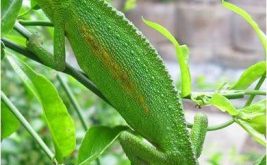Scientific Name: Eucalyptus
Family: Myrtaceae
Description
Eucalyptus trees are evergreen trees that belong to the Myrtaceae family. The are more than 700 species, almost all are native to Australia. Eucalyptus trees are estimated to have existed on the planet for 35 to 50 million years. The name of the genus is derived from the Greek words “ev” and “kalypto” which refers to the cover that initially covers the flower [1,2]. The height of the various species of Eucalyptus varies. It is worth noting that a plant of the species Eucalyptus regnans has a recorded height of 99.6 meters and is ranked as the third tallest tree in the world [2].
Spreading
Based on historical data, after the discovery of Australia by James Cook in 1770, eucalyptus trees spread and were cultivated with great success in almost all parts of the world. Eucalyptus trees were first introduced to our island in 1879, shortly after the English descent. According to a recommendation of the Indian Service’s SAW in the British Parliament, some species of eucalyptus were introduced to Cyprus in 1879. Subsequently, the first director of the then newly established Department of Forestry also proposed the introduction of eucalyptus with the main purpose of drying the marshes. By 1984, 163 species of eucalyptus had been introduced to Cyprus.
Importance and uses
there are many uses combined with their ability to adapt to almost any soil have made eucalyptus the most popular plant in the world. The production of timber, firewood, biomass for biofuels, paper production the use of essential oil in perfumery, its decorative value, its use as an excellent beekeeping plant are some of the reasons why eucalyptus is considered a plant of great economic value 2].
Therapeutic Properties
Eucalyptus is considered a plant with many healing properties [1-4]. For centuries, eucalyptus oil has been used in bronchitis and asthma attacks to stop excessive bronchial secretion. It also soothes coughs, flu and in previous years was used as a sedative during tuberculosis. In addition, it is ideal for treating sinusitis, nasal congestion, runny nose, and rhinopharyngitis. Both the essential oil and the eucalyptus decoction have antiseptic, disinfectant, antispasmodic and antimicrobial action, while their combination in the bath water helps to treat insomnia. There are reports of hypoglycemic activity, which is why it is good for diabetics. In external use, eucalyptus has disinfectant, deodorant, insecticidal properties and heals wounds, ulcers, light burns and acne [3-4]. However, its use and dosage should be done with caution, as it may irritate the kidneys and respiratory system if it is sensitive, and is not recommended for people with high blood pressure [3]. Its beneficial properties are so important that every year a symposium is held to assess and manage environmental issues in relation to its cultivation in the southern states of the United States.
Sources:
[1] Γεώργιος Ν. Χατζηκυριάκου. Αρωματικά και αρτυματικά φυτά στην Κύπρο – Από την αρχαιότητα μέχρι σήμερα. Πολιτιστικό Ίδρυμα Τραπέζης Κύπρου, Λευκωσία 2007.
[2]http://cybeeas.org/wp-content/uploads/2013/06/%CE%95%CF%85%CE%BA%CE%B1%CE%BB%CF%8D%CF%80%CF%84%CE%BF%CE%B9.pdf
[3]http://www.dimokratianews.gr/content/4635/%CE%B5%CF%85%CE%BA%CE%AC%CE%BB%CF%85%CF%80%CF%84%CE%BF%CF%82-%CE%B4%CE%B9%CE%AC-%CF%80%CE%AC%CF%83%CE%B1%CE%BD-%CE%BD%CF%8C%CF%83%CE%BF%CE%BD
[4] www.medlabnews.gr
Image source:
http://commons.wikimedia.org/wiki/File:Eucalyptus_flowers2.jpg
 Κυπριακό Κέντρο Περιβαλλοντικής Έρευνας & Εκπαίδευσης – Κυκπεε
Κυπριακό Κέντρο Περιβαλλοντικής Έρευνας & Εκπαίδευσης – Κυκπεε




